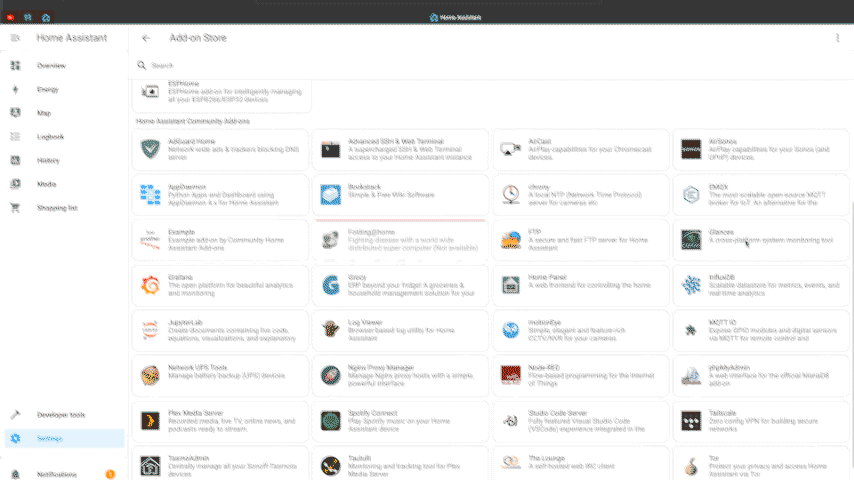Complicate Home Assistant? Are you a Home Assistant enthusiast who’s ever found themselves knee-deep in a web of complexity? While pushing customization boundaries can be thrilling, it’s crucial to avoid certain common mistakes that can lead to unnecessary headaches. In this article, we’ll break down these pitfalls and guide you towards a simpler, more robust Home Assistant setup.
If you also need to see the most common 7 mistakes in Home Assistant, be my guest – 7 Common Home Assistant Mistakes and How to Avoid Them
Table of Contents
Mistake #1: Complicate Home Assistant Data Storage:
One of the initial missteps many Home Assistant users make is opting for MariaDB over the default SQLite for data storage. MariaDB is offered to the Home Assistant users as one-click install in the Add-on store, which makes the transition easier, but that is just for the start.

While Maria DB offers robustness, it also introduces an additional layer of complexity. For the majority of users, SQLite does the job just fine. It’s important to weigh the benefits of Maria DB against the potential added complication it may bring.
Delving deeper into this, Maria DB might seem like a power move, but it’s vital to question whether the benefits outweigh the added complexity. Consider your specific needs – if you have a sprawling network of devices and an extensive history of data, Maria DB might offer advantages. However, for simpler setups, SQLite is often more than sufficient, and it keeps things streamlined and easier to manage.
Mistake #2: Straying from Built-In Tools:
The temptation to connect to external tools like Grafana and InfluxDB for visualization and data storage can be strong. These are indeed powerful tools, but Home Assistant already boasts robust features for these tasks. Diverging from these built-in tools can lead to maintenance headaches, update complications and most importantly performance issues.

It’s essential to recognize that the tools integrated into Home Assistant have been designed with its ecosystem in mind. They’re optimized for seamless performance and are aligned with the platform’s development direction.

By opting for external solutions, you might inadvertently create compatibility hurdles that could hinder the overall efficiency of your smart home setup.
Mistake #3: Building an Over-Engineered Cluster:
Creating a Home Assistant cluster from a variety of devices like Raspberry Pis, desktops, or servers may seem like a cool experiment. However, keeping this setup up-to-date can be a nightmare.

With Home Assistant’s frequent updates, stability becomes a significant concern. Sometimes, a simpler setup with straightforward backup and restore procedures proves more reliable.

While the allure of a high-availability cluster is undeniable, it’s crucial to evaluate whether the added complexity is truly necessary for your specific use case. Consider the resources you have available for maintenance and whether the benefits of a clustered setup outweigh the potential complications in the long run.
Mistake #4: Embracing Unmaintained Integrations:
Custom integrations that aren’t well-maintained might seem like a quick fix for unique needs. However, they can become ticking time bombs as Home Assistant evolves. Opting for officially supported features is often a safer bet for seamless adaptability to changes.

While custom integrations can provide tailored solutions, it’s essential to be mindful of their long-term sustainability. Home Assistant’s vibrant community continually updates and refines integrations, ensuring compatibility with new versions. Relying on officially supported features guarantees a smoother experience and minimizes the risk of compatibility issues down the line.
Mistake #5: Overcomplicated Custom Dashboards:
Elaborate custom dashboards and themes can be visually stunning. Yet, building complexity here can lead to compatibility issues with each new Home Assistant update. Remember, simplicity often wins. A well-organized, straightforward dashboard is easier to maintain in the long run.

While it’s tempting to craft intricate custom dashboards that showcase your smart home’s capabilities, it’s crucial to consider the potential maintenance challenges. With each new Home Assistant update, there’s a risk that custom elements may require adjustments. Striking a balance between aesthetics and simplicity ensures a more stable and reliable smart home environment.
Conclusion:
In a world of ever-evolving technology, simplicity often proves to be the winning strategy. Keeping your Home Assistant setup straightforward can save you from unnecessary headaches and ensure a more enjoyable smart home experience. Remember, it’s not about the complexity of the setup, but its seamless adaptability through every Home Assistant update.
If you found this insight helpful, don’t forget to check out our Home Assistant webinar for more Home Assistant wisdom.
I’m Kiril, happy automating, fellow enthusiasts! Until next time! Bye!
